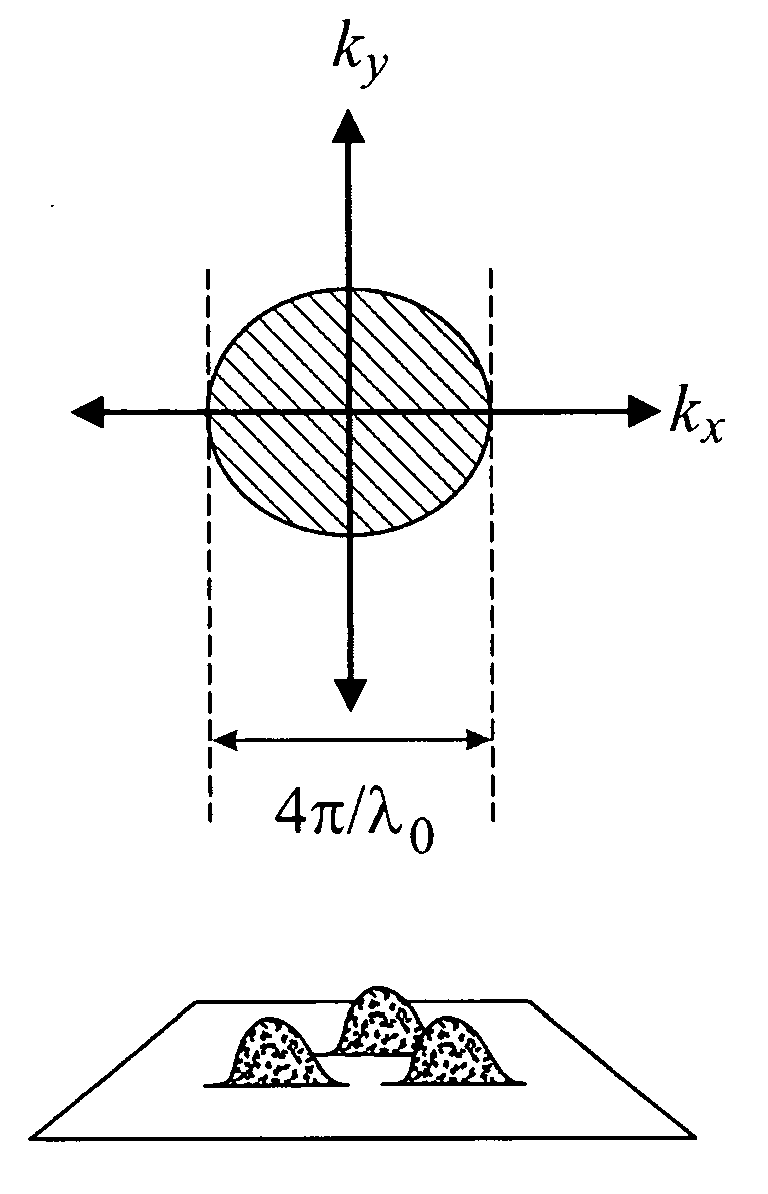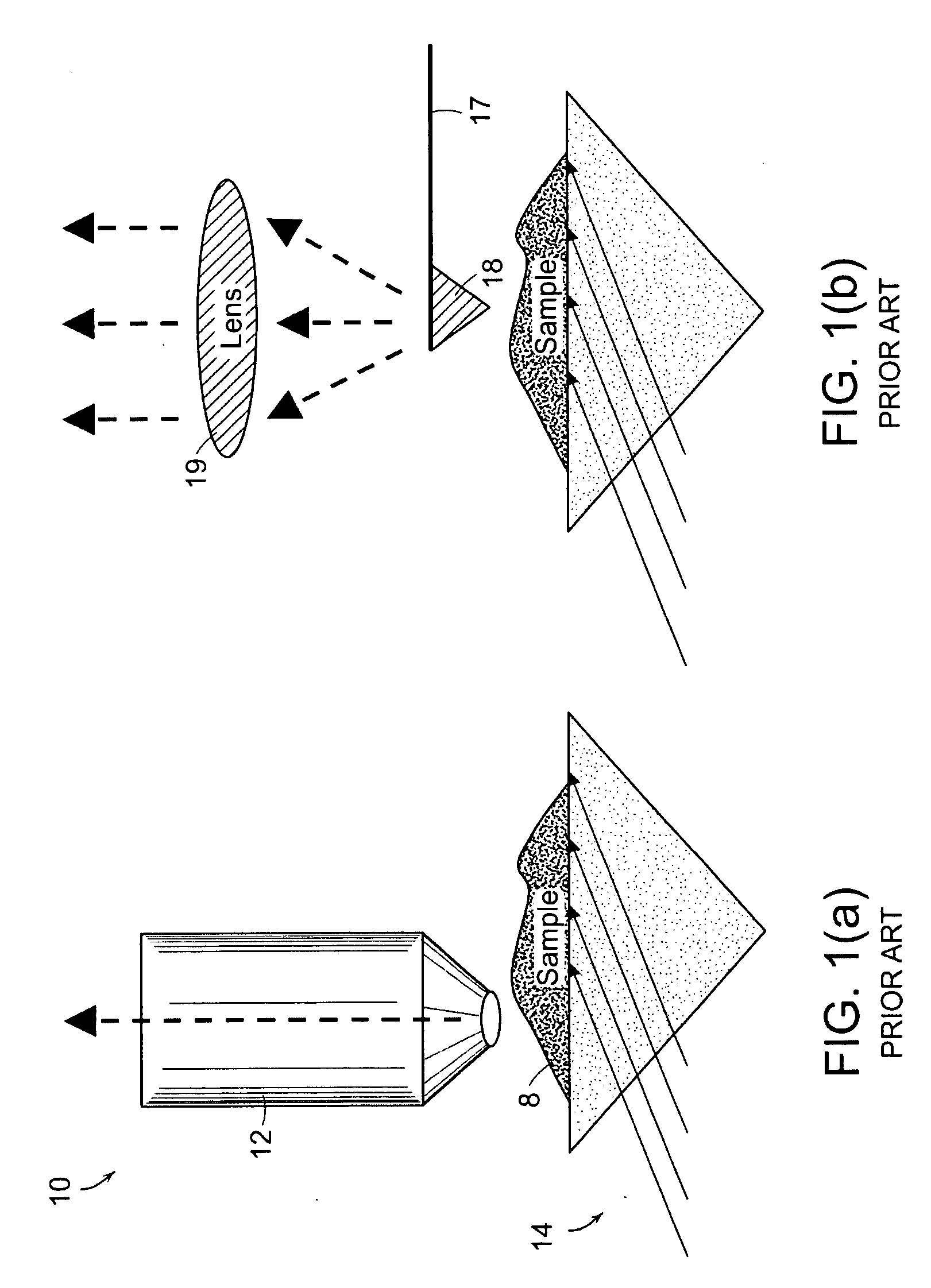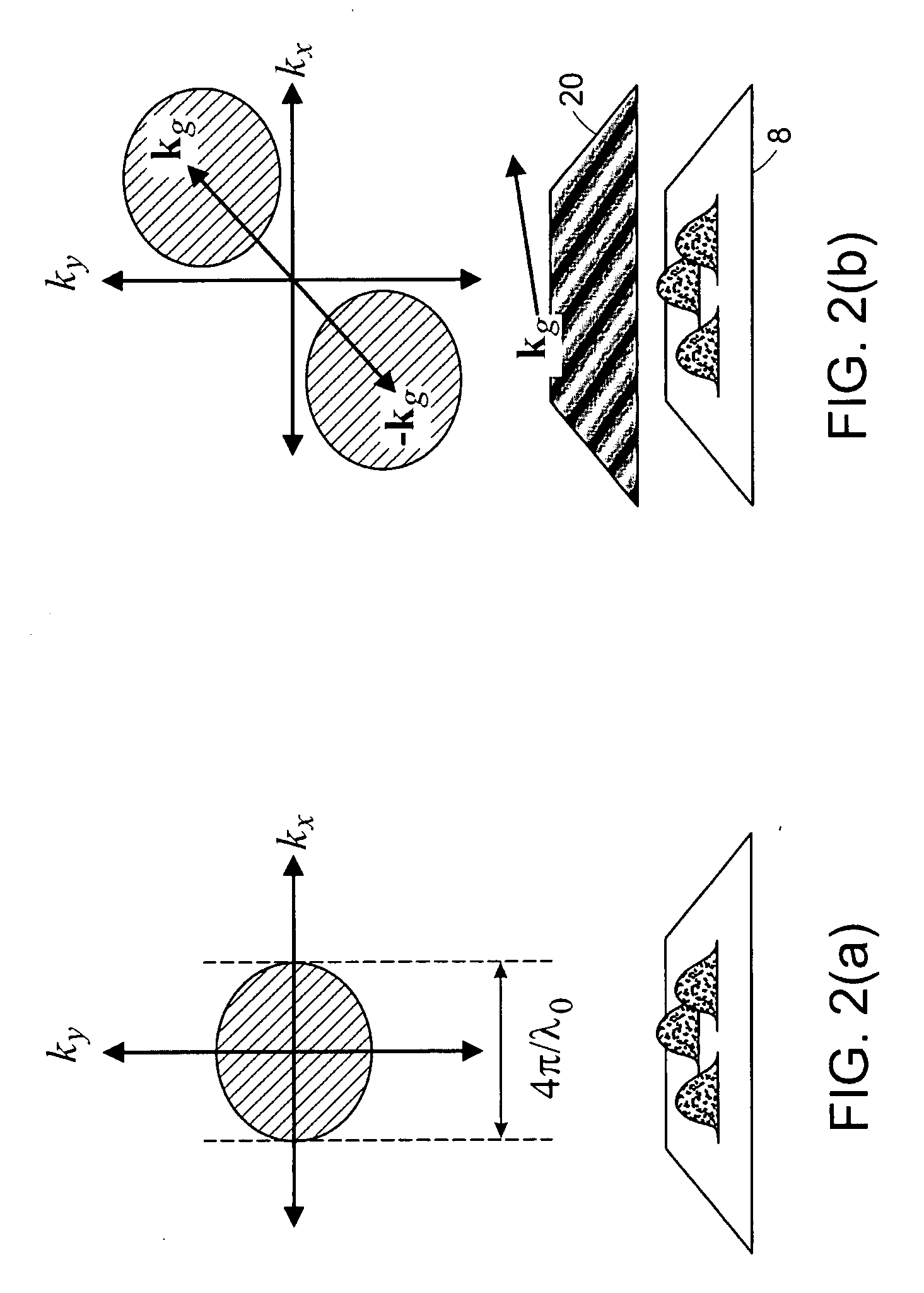Multiplex near-field microscopy with diffractive elements
a near-field microscopy and diffractive element technology, applied in the field of imaging methods and apparatuses, can solve the problems of only one point at a time, limited resolution by tip size, and surface alteration or tip damage,
- Summary
- Abstract
- Description
- Claims
- Application Information
AI Technical Summary
Problems solved by technology
Method used
Image
Examples
Embodiment Construction
Fundamental Principles and Terminology
[0039] As background to a description of the principles underlying the present invention, of this new instrument, a standard imaging instrument is first considered. If we image with a standard microscope of a numerical aperture given by N, the minimum feature size that may be imaged is approximately λ0 / 2N, where λ0 is the illumination wavelength. (The numerical aperture refers to the sine of the opening half-angle (or the angular semiaperture) in the object space multiplied by the refractive index of the object space and is a measure of the light-gathering power of an optical system.)
[0040] The performance of imaging systems is also commonly understood in terms of spatial frequencies. A single spatial frequency can be visualized by a periodic sinusoidal pattern of parallel lines. The number of lines per unit length (perpendicular to the lines) is the spatial frequency. For example, a pattern of lines where each line is separated by 10 μm has ...
PUM
 Login to View More
Login to View More Abstract
Description
Claims
Application Information
 Login to View More
Login to View More - R&D
- Intellectual Property
- Life Sciences
- Materials
- Tech Scout
- Unparalleled Data Quality
- Higher Quality Content
- 60% Fewer Hallucinations
Browse by: Latest US Patents, China's latest patents, Technical Efficacy Thesaurus, Application Domain, Technology Topic, Popular Technical Reports.
© 2025 PatSnap. All rights reserved.Legal|Privacy policy|Modern Slavery Act Transparency Statement|Sitemap|About US| Contact US: help@patsnap.com



